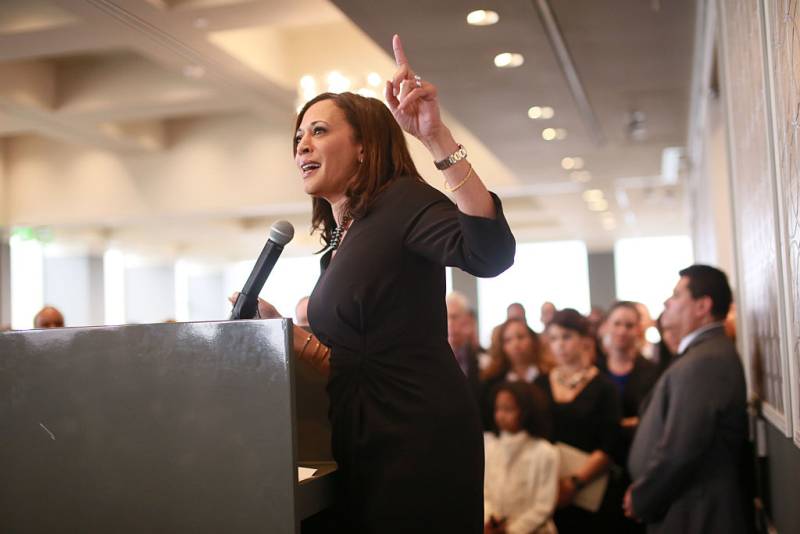“We used to have around 26 clients per month. It was a lot,” she said. “The banks never did respond on time. They were always asking you for more documentation. They were continuing doing the foreclosure procedures even though you were under review.”
“And then one day, Kamala Harris came in,” she said.
Trial by fire
California’s newly elected attorney general, Harris, took office as policymakers were grappling with the worst economic crisis in decades, and Californians were suffering: In 2009, as the subprime mortgage crisis began to peak, more than 3.5 million California households were delinquent on their mortgages; Florida was the next highest state with 3.1 million families behind.
As Harris assumed her role, other state attorneys general were negotiating as a group with the five largest banks over their outsize responsibility for the foreclosure crisis. But California wasn’t initially part of that group.
In her autobiography, “The Truths We Hold,” Harris recounts instructing her staff on her first day to join those multi-state settlement talks. By the fall, however, she made the risky decision to pull out, convinced that the banks were gunning for a deal that wouldn’t offer homeowners enough money or new protections — and would shield the banks from future probes.
That decision would prove pivotal in shaping Harris’ political career and public image, becoming a frequent reference point in her campaign narratives — including during her speech this summer at the Democratic National Convention in Chicago.
“As Attorney General of California, I took on the big banks, delivered $20 billion for middle-class families who faced foreclosure, and helped pass a homeowner bill of rights — one of the first of its kind in the nation,” she told the cheering crowd.
The subprime mortgage crisis wasn’t new to Harris: As San Francisco district attorney, her office had taken on several related mortgage fraud cases, including prosecuting the real estate agent who defrauded Marcelos. But now, as top prosecutor of the largest state in the nation, the stakes were significantly higher.
With a presidential election on the horizon, the Obama administration wanted Harris and the other attorneys general to strike a deal, which most of the other states were eager to do. And the banks were breathing down her neck.
“When she walked away and rejected what was put on the table, there was enormous pressure immediately upon her to show the next steps and … there were a lot of people who were leaning on her to change her mind,” said Nathan Barankin, her chief of staff at the time.
“She felt very, very strongly that the reason why she needed to reject what they had put on the table was because there had not been an adequate investigation into exactly what had happened and, more importantly, what the consequences were of the misbehavior by these big banks,” he said. “Her focus at that time, together with the executive team and so many other folks in the attorney general’s office, was to create and execute that investigation.”
This led Harris to a conference room at MEDA on Nov. 22, 2011, alongside Marcelos, and surrounded by San Franciscans who had lost their homes or were in the process of losing them. It was one of several meetings she held around the state with distressed homeowners and their advocates.
“I wanted to be here today to hear these stories,” she told the group, according to a video of the meeting. “There are a lot of people who are debating and talking about it and thinking about it from a perspective that is intellectual or perhaps political or academic. But the reality is, this issue is about each of you at this table and the experiences that you’ve had.”
She added, “We’re talking about folks who have believed in the American Dream.”
Marcelos said that at that meeting, the attorney general was “very friendly, very approachable. ” Harris, she said, “understood the pain of all the families that were present and acknowledged [it],” giving them hope for systemic change.
A formative settlement
In January 2012, Harris demanded to talk directly to one of the key players in the settlement talks: JP Morgan Chase CEO Jamie Dimon. According to her book, the call devolved into a yelling match, with Dimon accusing Harris of “trying to steal from my shareholders,” to which Harris fired back, “Your shareholders? My shareholders are the homeowners of California.”
Within two weeks of that call, Harris and the other attorneys general had struck a deal with the mortgage lenders.

